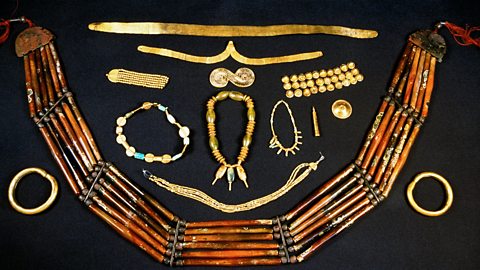How do we know about the Indus Valley?
The Indus Valley civilisation left no temples or tombs, like the Pyramids of Egypt. There are also no remains of great statues of kings or gods. Instead the Indus Valleyās cultural legacy is of small and well-crafted art.

Image caption, The Indus people made intricate jewellery. These pieces are made from gold and agate (a coloured mineral stone).
Image caption, Indus traders carried bangles and ear studs, like these, in their trading packs.
Image caption, Indus potters made plain everyday pots, and fine decorated pots like this one. The top half of the pot is decorated with painted birds.
1 of 3
While many ancient civilisations focused on worship, it seems that play was very important to the Indus Valley people. They made toys and small figures of people and animals, using metal and clay.
Small clay figures were thrown into rubbish pits. Perhaps they were good luck charms, or used once and then thrown away?
What can we learn from Indus Valley writing?
The Indus people wrote on soft clay using pointed sticks or by scratching marks onto stone and metal.
People wrote the first line from right to left, the second line from left to right, and so on.
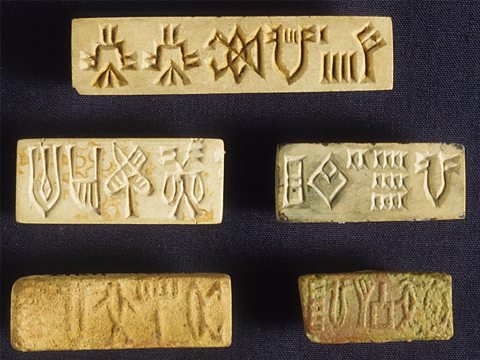
What can we learn about the writing that was left behind? Well, not very much. Indus Valley writing used at least 400 picture-signs - they were not letters like in our alphabet. But the longest bit of writing found has only 26 characters.
No one knows what language the Indus people spoke, and no one has yet been able to read their writing.
Some experts think the Indus language may have been similar to Tamil, which is spoken today by people in southern India and Sri Lanka.
Watch: What has been found from the Indus Valley?
Find out what artefacts have been discovered in the ruins of Mohenjo-Daro
When Mohenjo-Daro was first excavated by Sir John Marshall and a team of Indian archaeologists in the 1920s, they revealed to the world a vast, buried, forgotten city.
A major find for Mohenjo-Daro was a stone statue ā the Priest King.
Archaeologists have suggested that he could have been an important ruler, or a religious leader, or even a resident foreign dignatory.He has a headband which looks similar to gold ones found elsewhere in the region.
So, we know they had access to precious metals, and the skills and technology to work the metals.
There have been lots of artefacts found at Mohenjo-Daro, which can help to build up a picture of how people lived.What do these artefacts tell you?
What do artefacts tell us about religion?
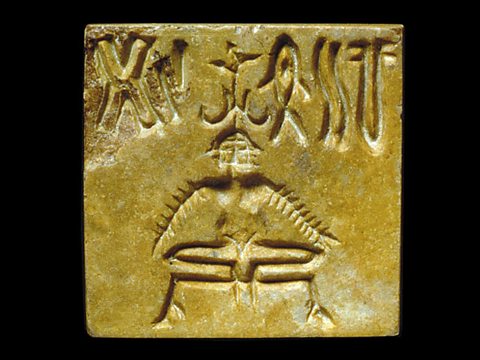
Pictures on seals and other artefacts show what look like figures of gods. But we don't know what the Indus people called them.
One looks like a mother goddess. People might have believed this goddess gave health and fertility to people, animals and plants.
Plants, trees and animals were probably important to Indus people. The pipal or fig tree is shown on many seals, and is still a sacred tree for many Buddhists and Hindus.
Hinduism also places importance on ritual bathing. Many people believe the 'great bath' found in Mohenjo-Daro suggests the Indus people held similar beliefs about purity.
Some people think that the Indus religion shaped early Hindu beliefs.

What can we learn from burial sites?
Graves can tell archaeologists a lot. Indus Valley people were buried with clay pots and clay figures, as well as beads.
Putting these items in graves may mean that they had a religious belief in an afterlife, in which they could use these belongings again.
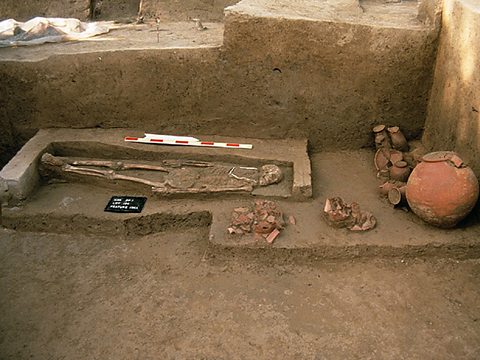
In the 1920s, 39 skeletons were found in the city of Mohenjo-Daro. Some archaeologists thought these men, woman and children might have been killed by invaders.
However, only two skeletons had marks similar to those made by sword or spear. One was an old wound, another was healing - perhaps after an accident.
There is no evidence of a battle. Perhaps these people were left together because they died from disease. What do you think happened to these mystery skeletons?
Activity: Quiz ā Indus Valley artefacts
Bitesize Primary games. gameBitesize Primary games
Play fun and educational primary games in science, maths, English, history, geography, art, computing and modern languages.

More on Indus Valley
Find out more by working through a topic
- count4 of 8

- count5 of 8
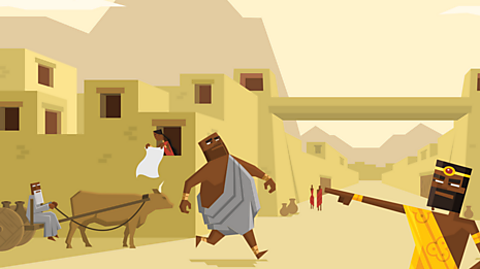
- count6 of 8
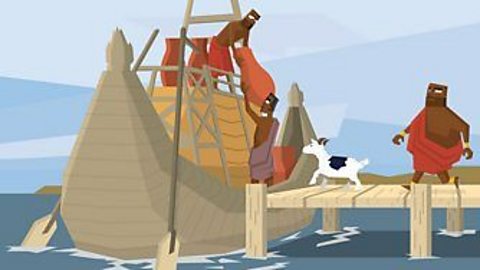
- count7 of 8
